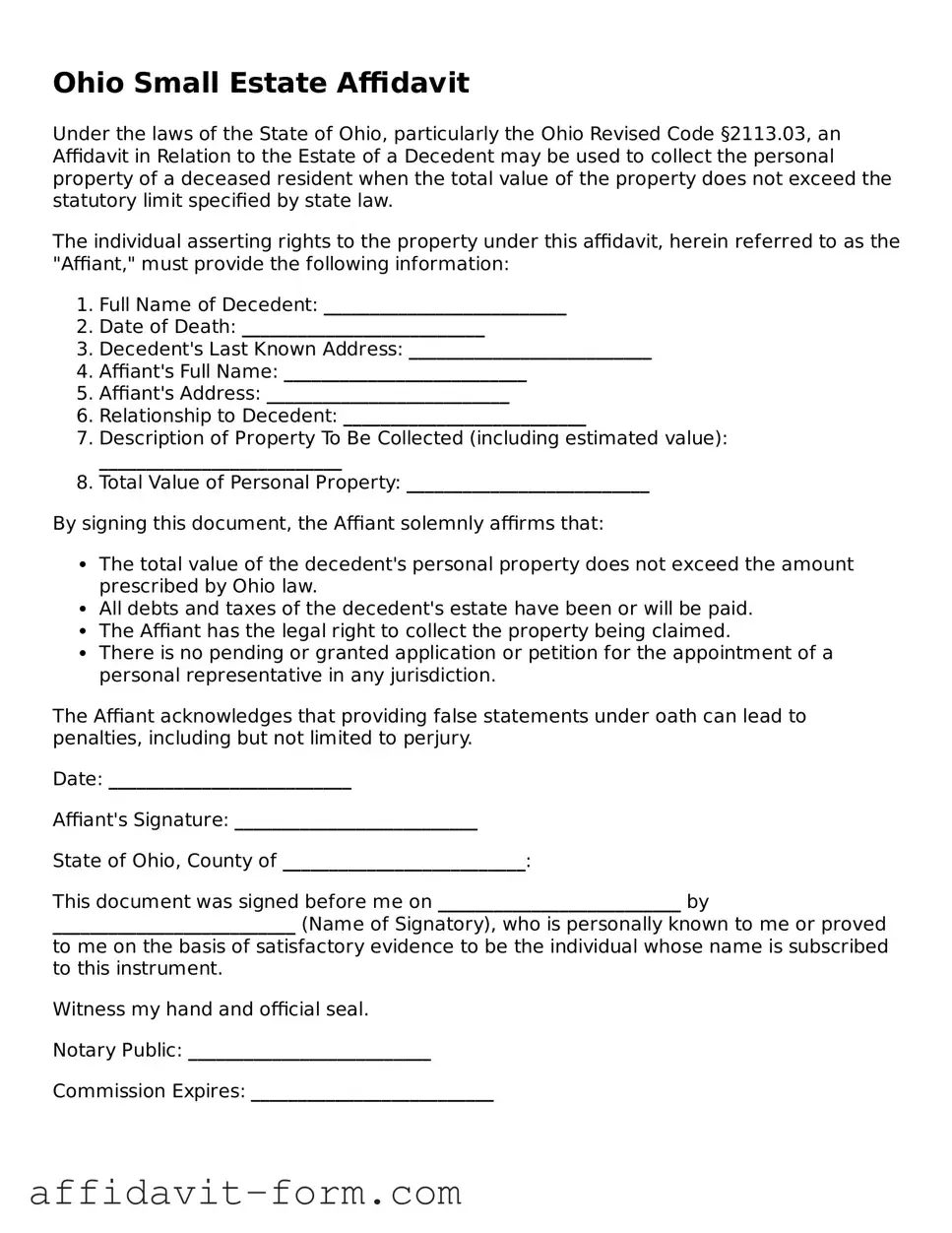Ohio Small Estate Affidavit
Under the laws of the State of Ohio, particularly the Ohio Revised Code §2113.03, an Affidavit in Relation to the Estate of a Decedent may be used to collect the personal property of a deceased resident when the total value of the property does not exceed the statutory limit specified by state law.
The individual asserting rights to the property under this affidavit, herein referred to as the "Affiant," must provide the following information:
- Full Name of Decedent: __________________________
- Date of Death: __________________________
- Decedent's Last Known Address: __________________________
- Affiant's Full Name: __________________________
- Affiant's Address: __________________________
- Relationship to Decedent: __________________________
- Description of Property To Be Collected (including estimated value): __________________________
- Total Value of Personal Property: __________________________
By signing this document, the Affiant solemnly affirms that:
- The total value of the decedent's personal property does not exceed the amount prescribed by Ohio law.
- All debts and taxes of the decedent's estate have been or will be paid.
- The Affiant has the legal right to collect the property being claimed.
- There is no pending or granted application or petition for the appointment of a personal representative in any jurisdiction.
The Affiant acknowledges that providing false statements under oath can lead to penalties, including but not limited to perjury.
Date: __________________________
Affiant's Signature: __________________________
State of Ohio, County of __________________________:
This document was signed before me on __________________________ by __________________________ (Name of Signatory), who is personally known to me or proved to me on the basis of satisfactory evidence to be the individual whose name is subscribed to this instrument.
Witness my hand and official seal.
Notary Public: __________________________
Commission Expires: __________________________
